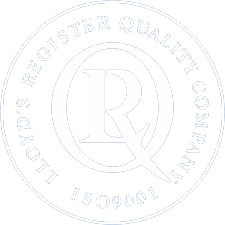Die Casting
An excellent choice for producing high-quality consistent parts in medium to high volume.
We offer a flexible, agile approach and have extensive experience producing die cast parts in various materials and finishes.
Home / Production methods / Die Casting
This method uses high pressure to force molten material into a mould / Die. It is especially suited for casting metals with low melting points, such as Aluminum, Zinc and Magnesium. Die Casting is an excellent choice for producing high-quality, dimensionally accurate products. Designed for medium to high production runs, we offer a flexible and agile approach for every project. We have access to a wide range of materials and foundries and can support the entire project cycle from design, engineering support, prototyping to mass production volumes. CMM inspection is used where possible to eliminate human error and provide a robust and repeatable inspection process against approved specifications.
The table below details some of our standard product offerings, but please get in touch if you have a special requirement.
| Die Casting | |
|---|---|
| Tooling Design | Yes |
| 3D Modelling / Casting Simulation | Yes |
| Rapid / Soft Tooling | 7-10 Days |
| Production Tooling | 15-40 Days |
| Standard Tolerance | +/- 0.1mm +/- 0.9mm |
| Heat Treatment | Yes |
| Output per Day | Hundreds |
| Minimum Order | Often as low as 250 |
| Casting Weight | 0.3kg - 120kg |
| Impregnation | Yes |
| Anodising | Variety of colours available. |
| Material Certificates | Every Batch |
| Inspection Methods | CMM, Micrometers, Height Gauge, Verniers etc. |
| X-RAY | Yes, on request |
| Pressure Testing | Yes |
| Inspection Reports | Completed on every batch |
We can support your die casting project and are highly skilled in providing complete turnkey solutions. We can provide a sub or full assembly service which incorporates your die casting design.

Die casted products that we’ve previously delivered
Why choose us?
If you're focusing on the following:
- Focus on quality and good solutions.
- A single collaborator throughout the development process
- Qualified engineers
- Internal production, resulting in better products.
- Effective development and short time to market.
- Modern product development methods
- Experienced in testing and certifications
- A production partner with over 25 years of experience, having an in-depth understanding of the development process.
- A production partner delivering to the highest quality standards.
- ISO 9001:2015 certified production



